Whoever looks at the development of the fetus & embryos is here! Facts in Overview & Tables
It is true that the test finally says "positive". Once the initial excitement was over and before the doctor confirmed the pregnancy, the curiosity came over, it was now actually in the stomach. The development of the embryo along with the embryo size every week afterwards, later, the development of the fetus will interest your becoming mother.

It is simply impressive how, through 40 microscopically small sperm and oocyte, he underwent a new human regrowth and various major development steps. We have summarized for you an overview of the size and weight of fetus and embryo with these different stages of development.

In the following, you will only find weight and size tables for fetus and embryo each week, as well as other counts, but also explanations, was changed and developed over the course of each week for information on the baby growth phases. Follow along with the interesting development of the fetus!
Achtung! Every baby develops differently. This is not just after birth, but is prepared in the belly of the mother. Our entries in the tables and in the text are only average values and no rule. Deviations are perfectly normal and, as a rule, no cause for concern.
Development of the fetus and growth of the embryos
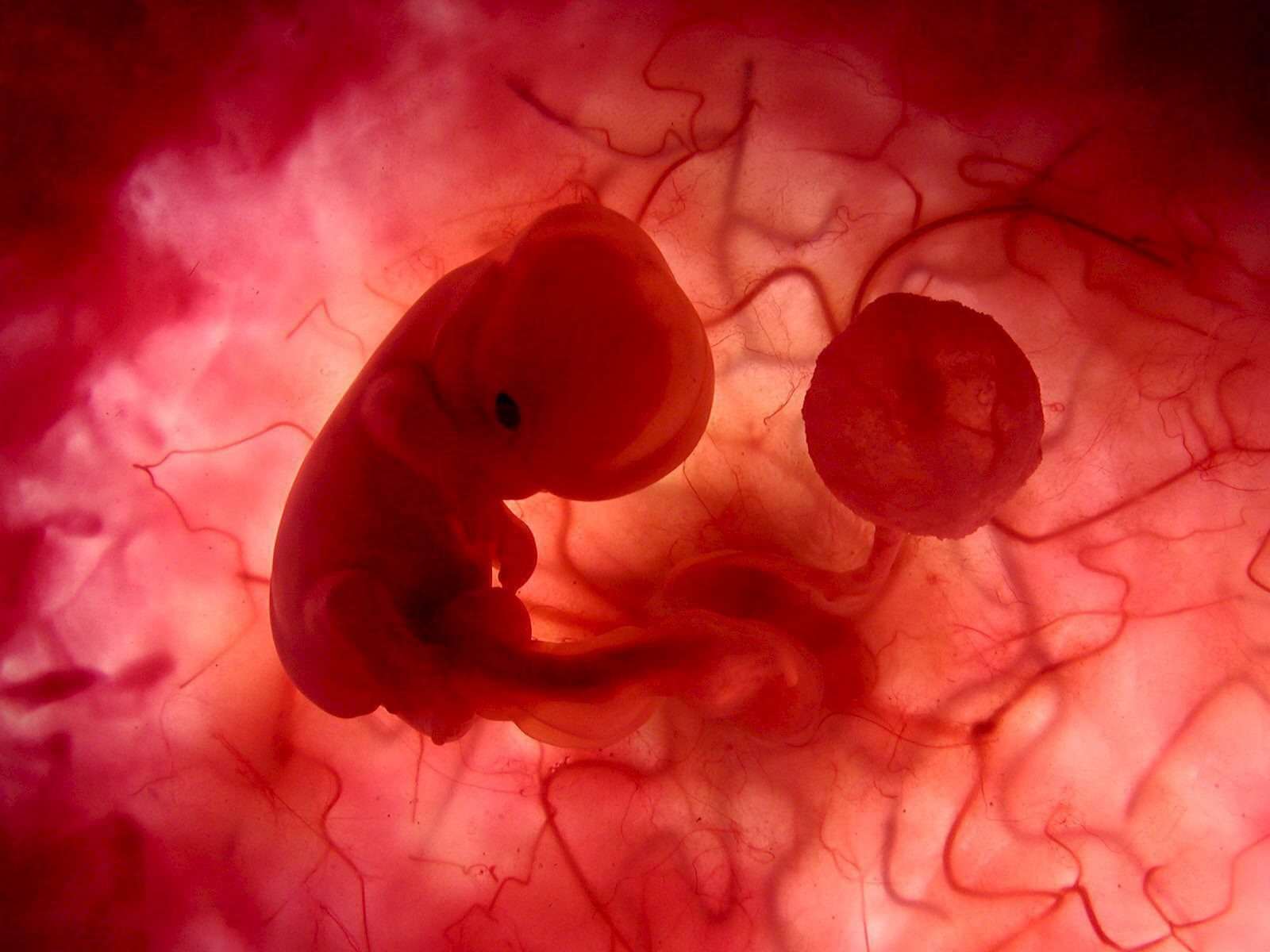
Some might ask, was actually the difference between embryo and fetus. Finally, both will be spoken. The difference exists in the age of unborn babies. In the last few weeks, it's about an embryo. From the 12th pregnancy week the baby is then called a fetus (sometimes even already from the 10th or 11th SSW).
While the baby is still too small in the last few weeks to be able to detect the weight at the embryo, at least the embryo size is known. The given dimensions refer to the distance from the slices to the slope. It is a lie that, at first, they still have to develop the leg and do not lie close to the body in order to measure the size of the embryo.
Development from fertilization to cell division
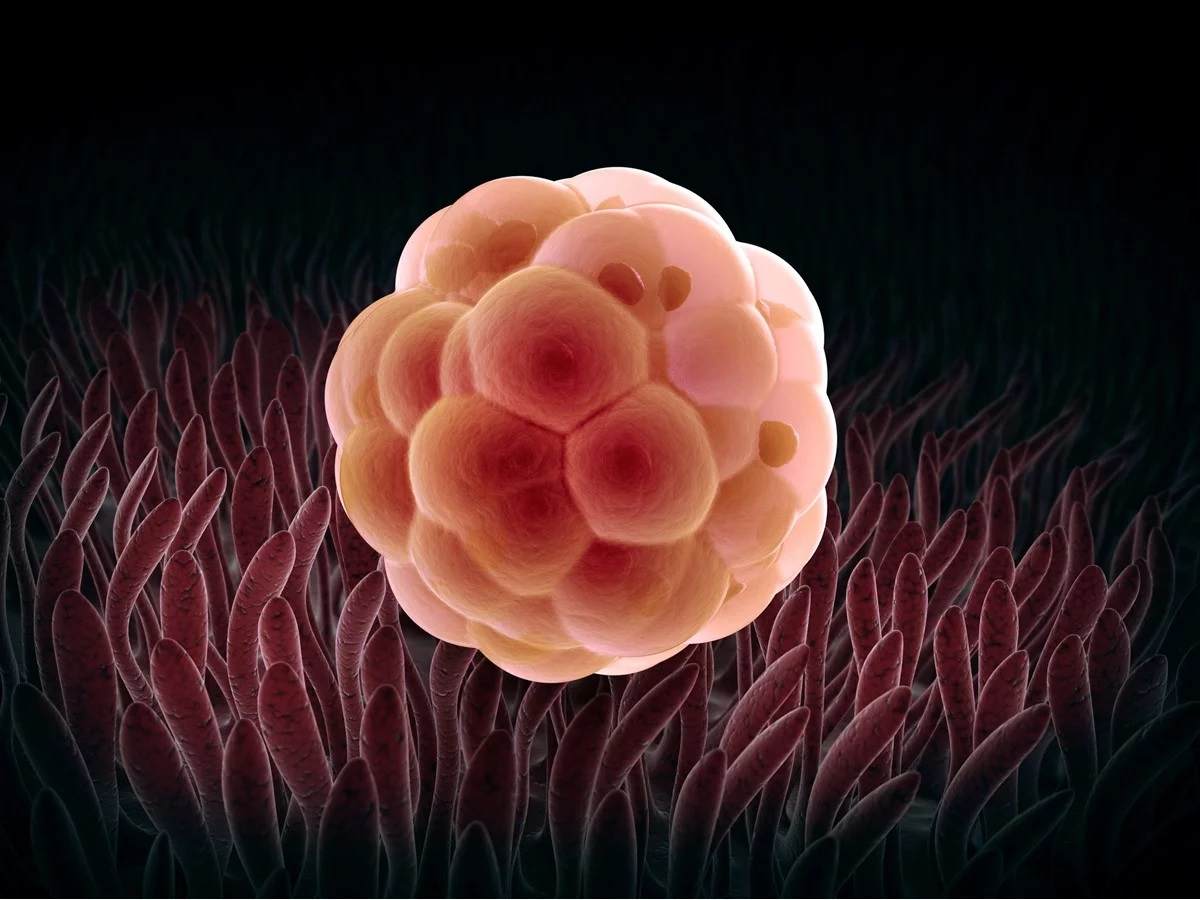
Development from baby to maternal life up to the 5th week of pregnancy looks as follows: The fertilized egg cell moves through the ovaries into the uterus, where you must be single. It usually lasts 4 to 5 days. Then the cell division begins. This cell division should not, but only embryo, form mother cakes and fruit blisters with fruit water, so that the baby can be taken care of in the coming months. This cell division will last for the next 2 weeks. At the end of this period, so in the 4. Pregnancy week, the embryo is about as large as a needle.
Human developmental table - Table for 5th to 11th week of pregnancy (SSW)
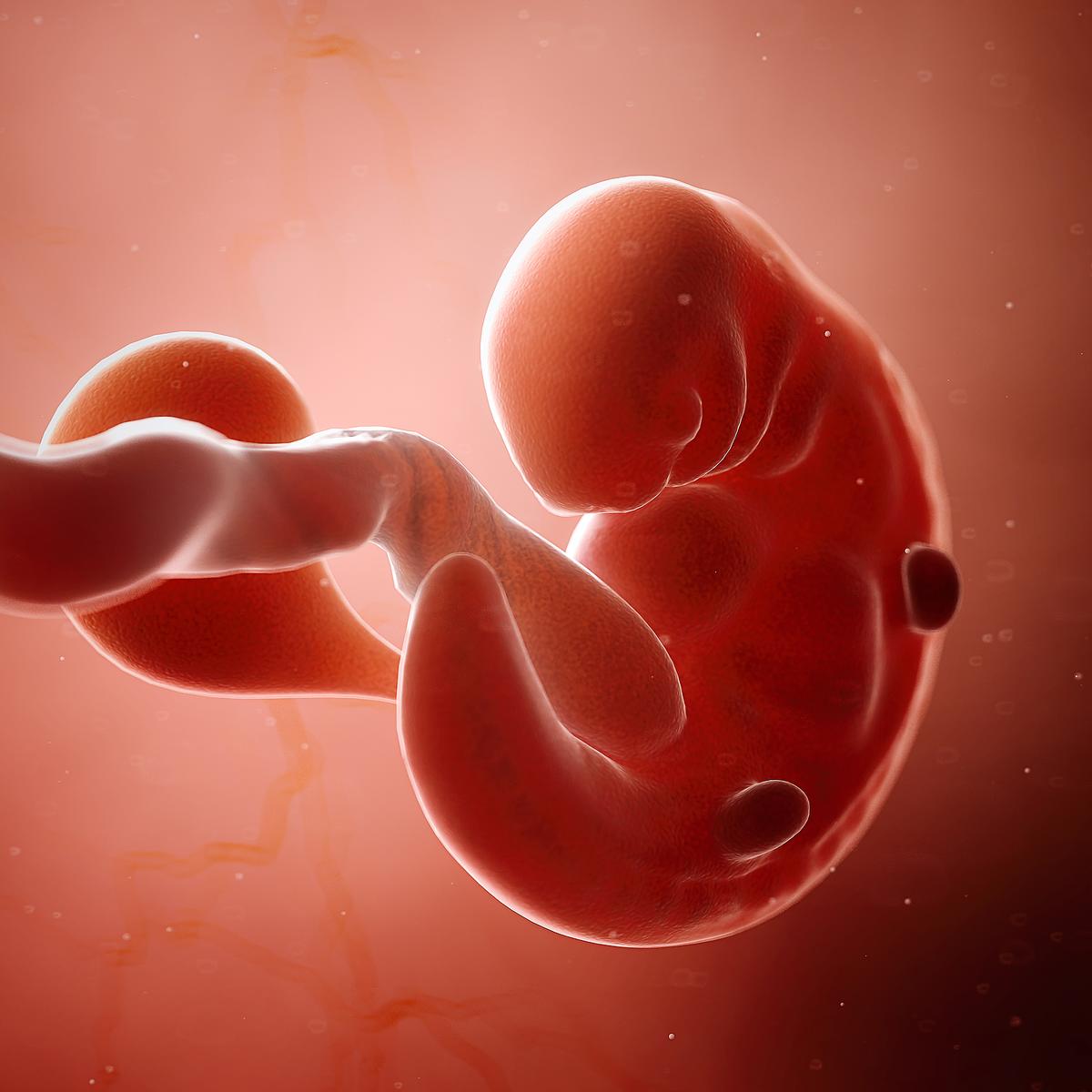
As with fertilization, the embryo begins to develop and grow rapidly. As an embryo, the tiny "cell ports" will only be designated from the 3rd SSW. Its length is already measured from the 5th SSW, while the weight is still too small to be measured. This is possible sometime from the 8th week of pregnancy. At this time, the weight gain of the baby per week is considered to have doubled in some time. Not included is the header size of embryo in the table. The reason is that this beginning cannot yet be measured. Also from the physician, it is logged from the 20th SSW.
Development of the embryos in the first few weeks
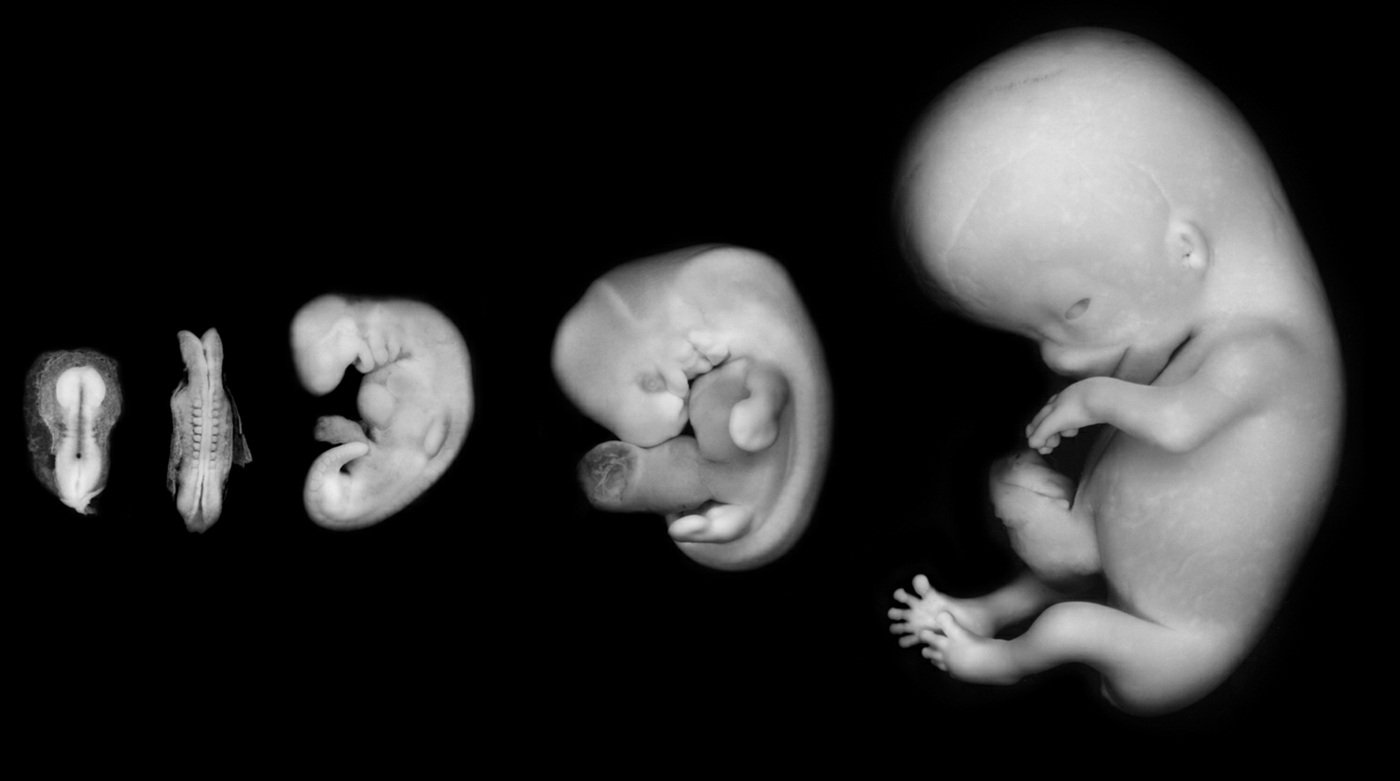
In the 5th week, the first time a pregnancy test can also be performed. If this is positive, a doctor's visit is incorrect, which is the first precautionary examination and a so-called mother's pass, in which all examinations were held. It is also interesting to know that pregnancy week is not the same age as the embryo-related fetus. Namely, the SSW was counted from the first day of the last rule bleeding, was in about 2 weeks before conception and sometime the baby's emergence. So in the 6th SSW the babies are actually only 4 weeks old, in the 15th SSW 13 weeks and so on.
Embryo weight and size
| SSW | Weight (g) | Length (mm) |
|---|---|---|
| 5 | - | 2 |
| 6 | - | 4 |
| 7 | - | 5 |
| 8 | 1 | 15 |
| 9 | 2 | 20-23 |
| 10 | 4 | 25-31 |
| 11 | 7-15 | 30-41 |
In there 5. SSW it is ready for the next exciting moment in the development of baby in the belly. And yet the little heart starts beating and it doubles as fast as the mother. This heartbeat is observed throughout pregnancy. It will now also be exchanged for the umbilical cord with all the necessities provided.
In there 6. SSW forms the spinal cord, which later becomes the vertebral column and currently ends in a tail. The head, in comparison to the body, is still quite large and develops the eyes, ears and brains.
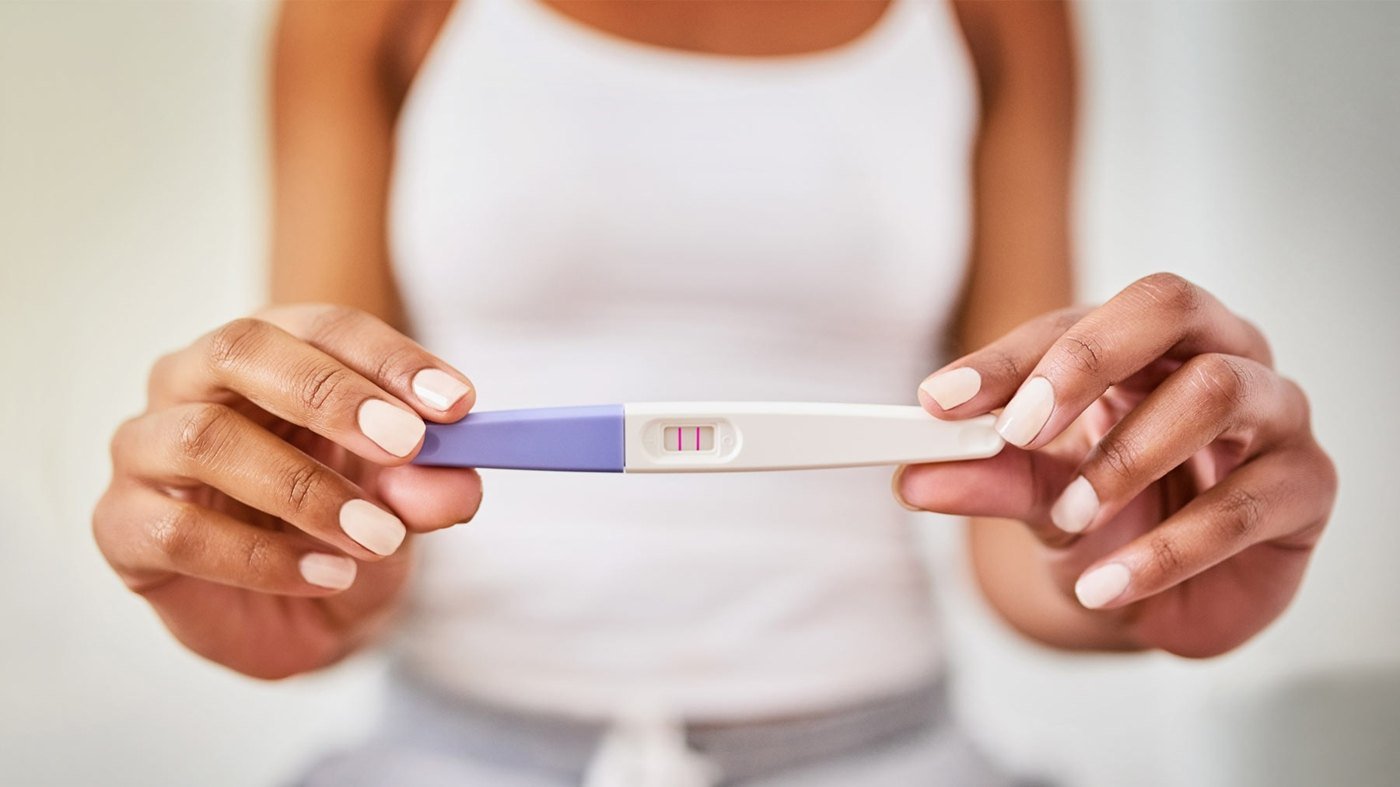
During the 7. SSW the embryo begins to move. It still does not deal with controlled movements, but with reflexive tugs. The baby is similar in its form to that of humans. The head is still firmly on the breast and has arisen for nose holes, lips and even teeth.
Also in there 8. SSW the development goes a long way. This is not just about recognizing the size of baby in this SSW. Determinants are already the worst hires for those tiny fingers and toes. Also, they start to develop the elbows and the knee. This is also related to bone crushing. Stomach and kidneys are also beginning to work. The head was lost somewhere. Since all the bones are still soft and crispy, one can even see the brain through the skull. Having become an eye-catcher later, there is still one fine skin that covered those eyes. More recently, they are still very much in the head.
Development of the fetus - brain and nerve cells
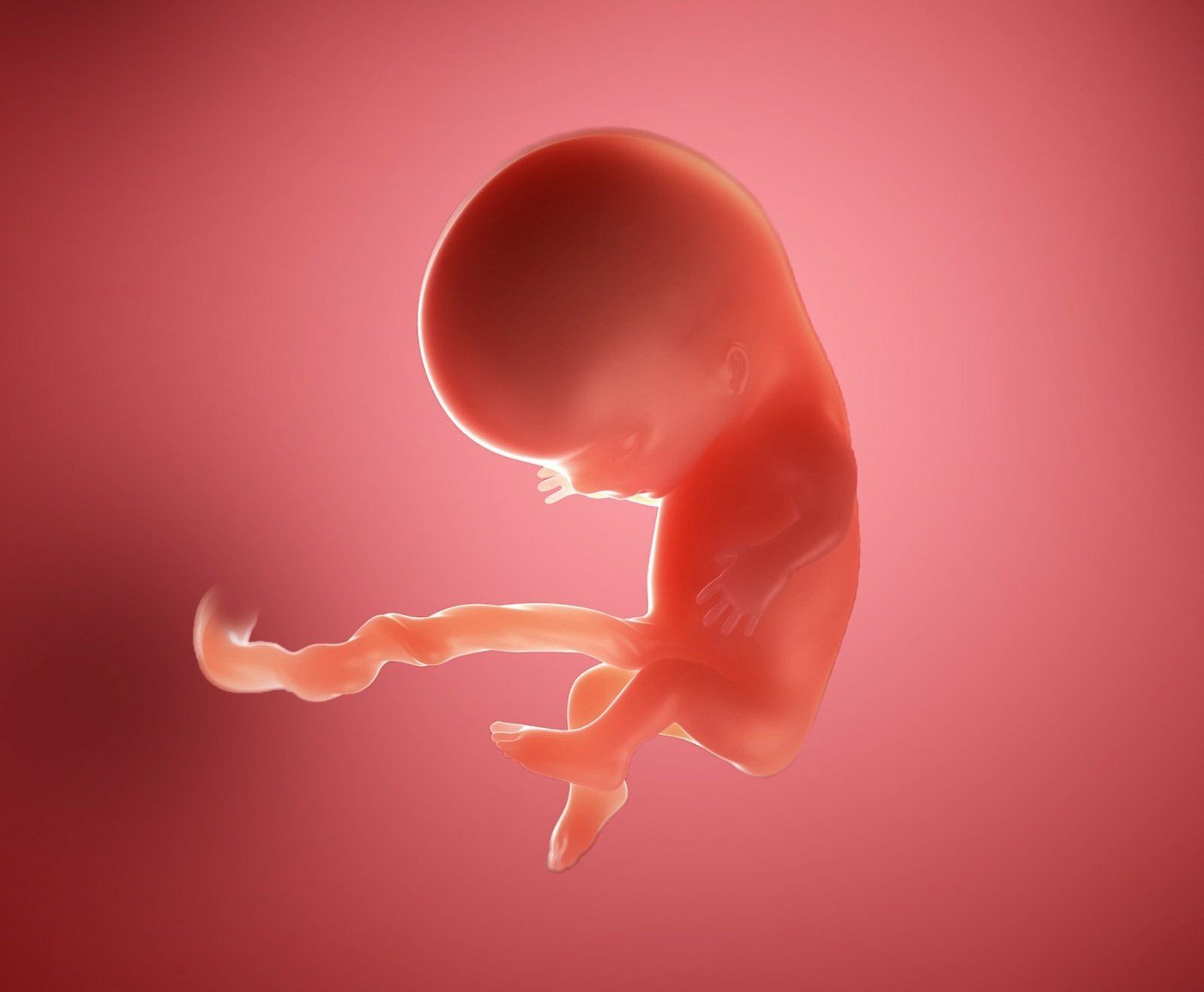
Nervous cells and brain lie during 9. SSW im midpoint. The brain now divides itself into all of its target areas and the nerve cells begin to transmit signals to the muscle cells. It develops protective plates that form the skull and which are still separated from each other (Fontanelles), so that the brain has a growing space for growth in the coming months. Legs and arms can now move the baby miraculously, while still being uncontrolled and not detectable by the mother.
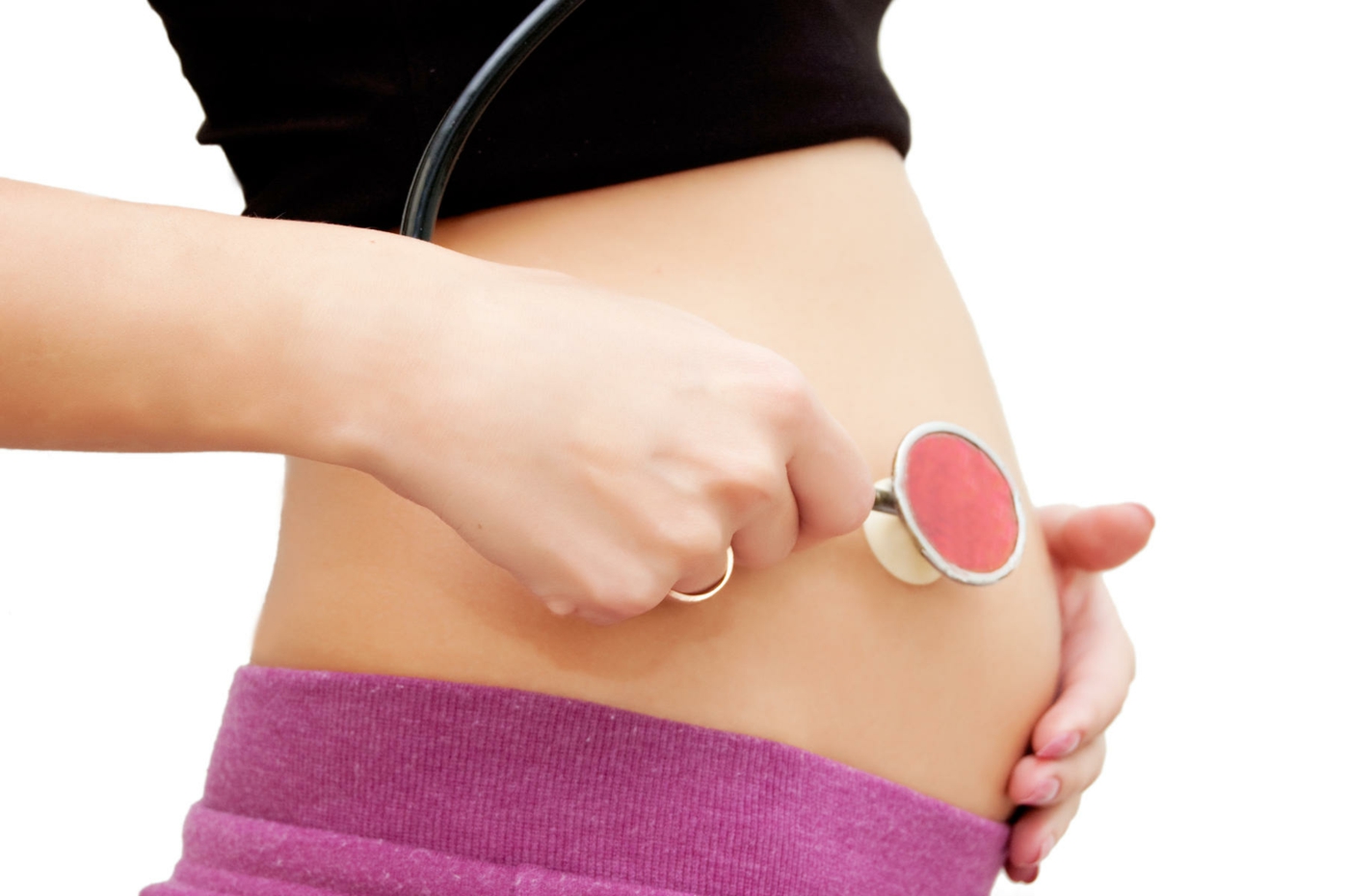
It follows that 10. SSW. Sometimes the little baby is already labeled as a fetus and the development of the fetus begins. The muscles hardly seem to rest and are in constant motion. The tail, which was formed before the end of the backstring, is already fixed back. Also, the nerve cells in your education continue to propagate and multiply and connect rapidly. The joints in legs and arms, as well as the fingers are finally developing, while the show is ready to begin.
Die 11. SSW can also be seen as the end of the embryonic phase. Then begins the development of the fetus. The baby now receives finger and tooth nails. Now, too, slowly forms the sexual organ. If it is about a boy, the penis can be recognized. This does not apply to the ultrasound. With his help, the sex can be determined precisely later. The baby's body is slowly getting some kind of flow, too, which is becoming more and more covered. The organs are developing and now ripening until birth.
Development of the fetus and weight table of the fetus
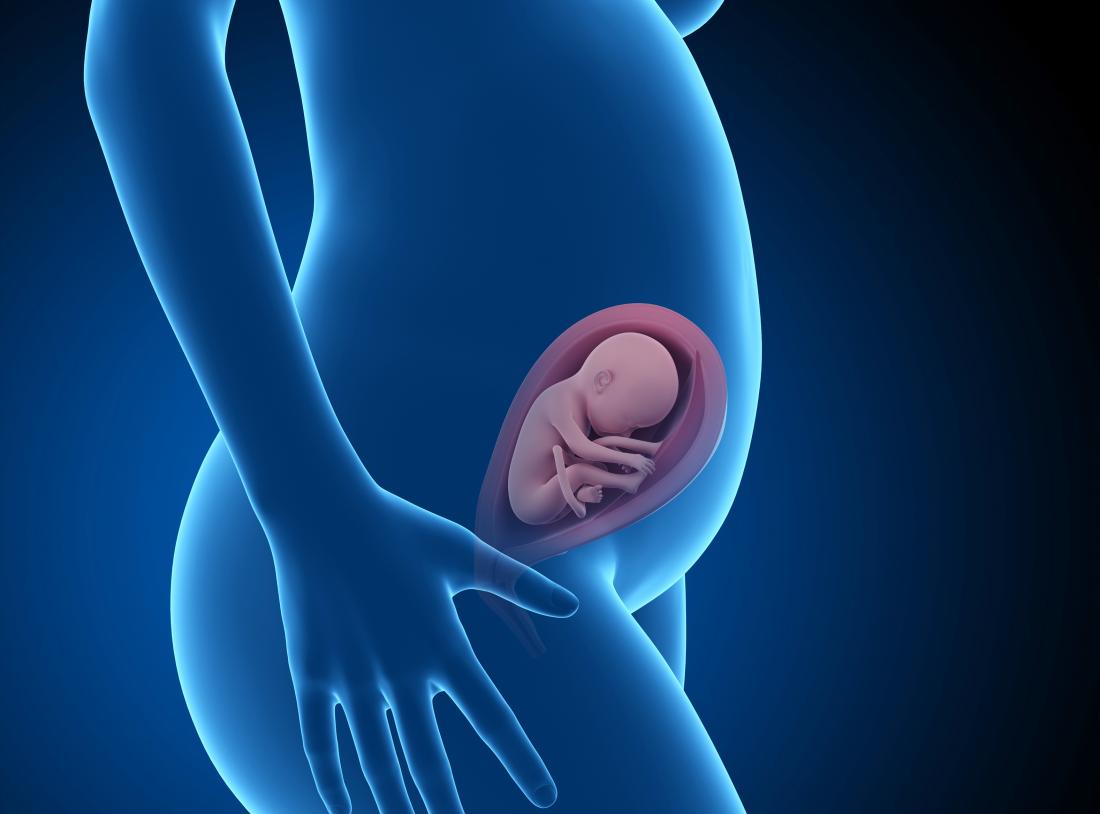
The fetus is constantly evolving and surely interested in what SSW is characterized by its developmental success. Also, for the next 6 weeks we have the size and weight increase of baby per week in a table summarized and concatenated, was exactly developed in the small body. The weight of the fetus is increasing more and more and in a short period of time comparatively fast. Experience the following in developing the fetus.
Fötus size and weight in a table - 12 to 17. SSW
| SSW | Weight (g) | Length (cm) |
|---|---|---|
| 12 | 14 - 16 | 5 - 5.4 |
| 13 | 18 -23 | 6 - 7.4 |
| 14 | 25 - 43 | 7.1 - 8.7 |
| 15 | 50 - 70 | 8.1 - 10.1 |
| 16 | 90 - 100 | 9.4 - 11.6 |
| 17 | 100 - 140 | 10.6 - 13 |
The official development of the fetus also often begins with it 12. SSW. Nothing but the fetus weight changes further and increases. And other impressive things happened this week. Those eyes are ever lowered into the headache and the lips can already move the little wonder. Moves upwards too, so that the baby can now also turn. As the fetus now swallows fruit water, swallowing is no rarity. These becoming mates can rarely even ask at a certain point in time. It is a good exercise for the late breathing, just like the ones that are starting now.
Finished is that too Plazentaso that they can now provide the baby with nutrients and oxygen until after the birth of their air and lungs is taken over. All of this receives the placenta from the blood of the mother. Therefore, a healthy diet and the reliance on alcohol, cigarettes and drugs are also likely to be important.
The placenta is an important part of the development of the fetus
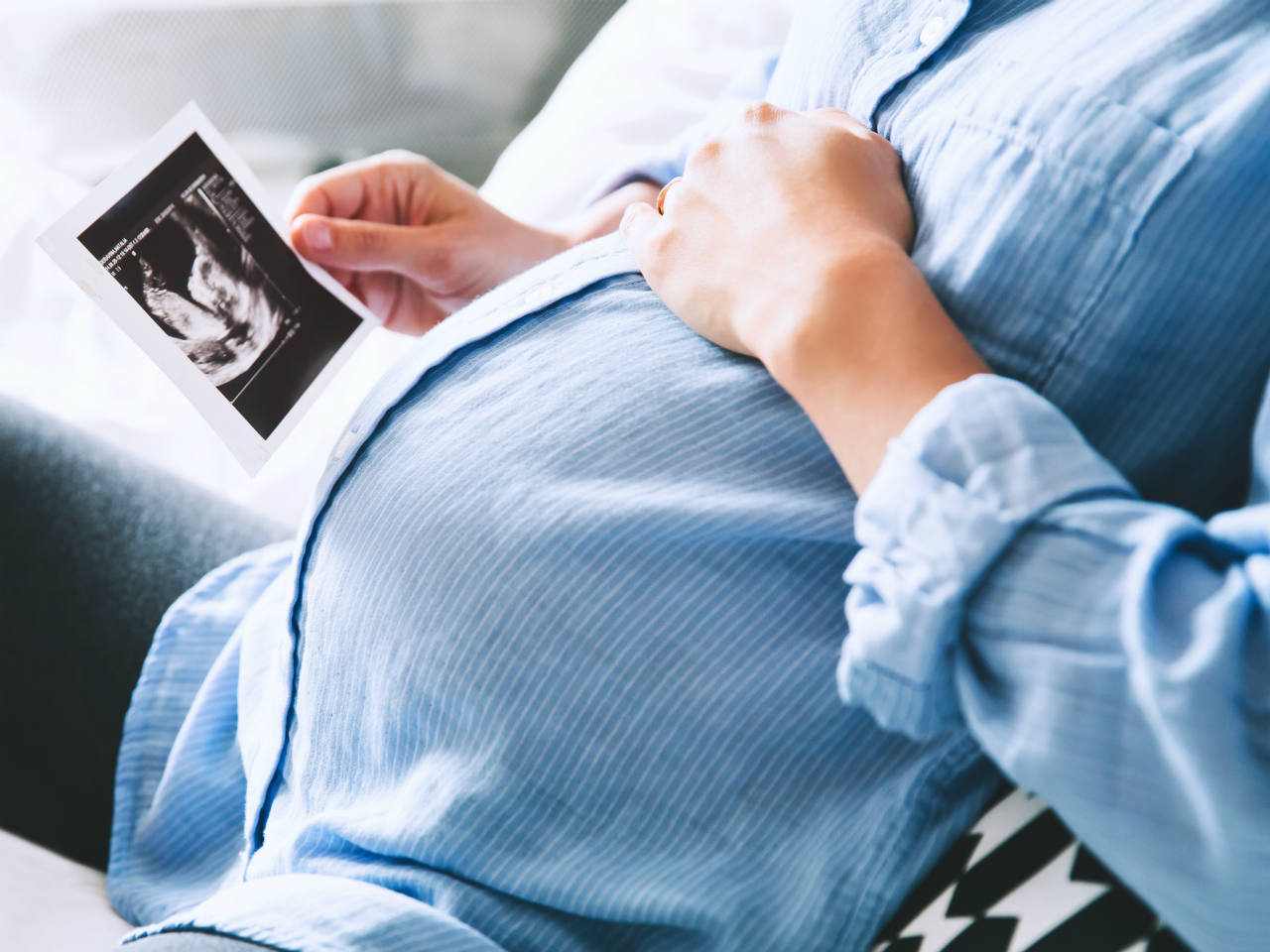
It follows that 13. SSW, which is the perfect time to start talking with the baby, playing it or playing music. Because even though the hearing aids are slowly interconnected, it is possible to perceive various noises. It feels so good that it reacts with movements. It also links to and to the other bones. Damit closes the body completely from the age of adolescence. The vocal cords are formed and the baby can already distinguish Hell from Darkness. An interesting advance in the development of the fetus!
Development of the fetus - Full training program
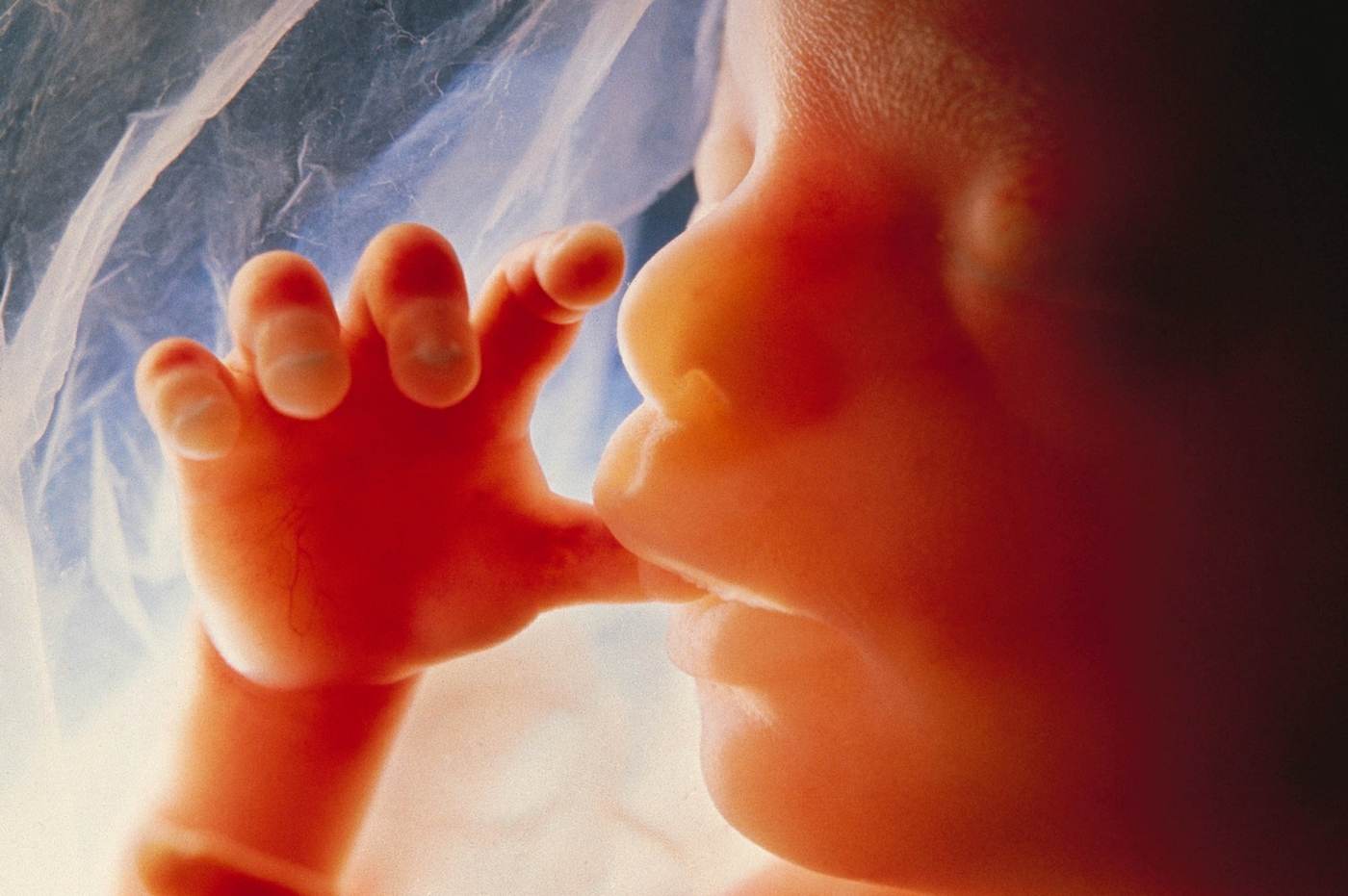
In there 14. SSW the baby begins to tune things. It will soon be more frequent in the thumb and in this way train the suction reflex, which is important later on in breastfeeding and thus an important step forward in the development of the fetus. Also, the grip reflex is already diligent by playing with the umbilical cord. The face develops further and becomes more recognizable.
Even the worst hair, eyelashes and eyebrows are growing now. It creates the so-called cheese ants as protection for the skin from the fruit water (produced by the tallow glands of Lanugo hair). You and the Lanugo hair cover the entire baby body, while the hair over time disappears again. Most often this happens before birth, sometimes even for some time.
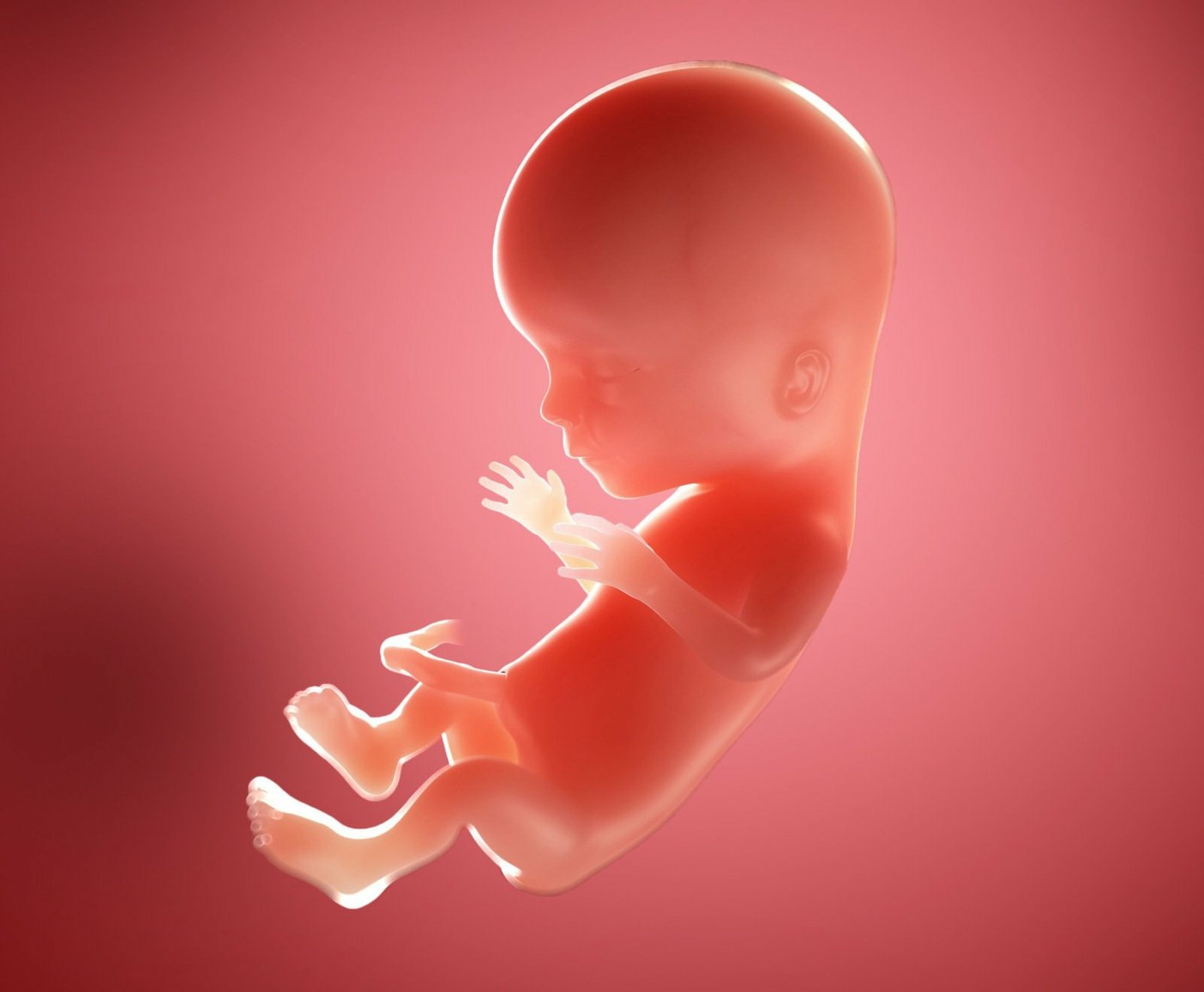
Mit der 15. SSW the heart is now fully finished and the sex can be determined by the ultrasound, as long as the baby is also aiming and favorably positioned in this regard. The heads are first but still not in the belly cave. Just before birth and sometimes even for a while, they step out. In Maiden, the Eierstöcke, as well as millions of ova, which are monkey or unripe, are developing.
Development of the fetus in the 16th SSW

Interesting to know is that in the 16. SSW the unique fingerprint of the baby. Although the hearing improves further, it has not been extended for a long time. The baby is always moving, stretching and squeezing and even pulling grimaces and training so his muscles. Since all important organs need to be nourished and only ripen until birth (sometimes even after birth), it is now the most important task in the development of the fetus, to grow and to gain weight and fat reserves. These are needed for the days after birth.
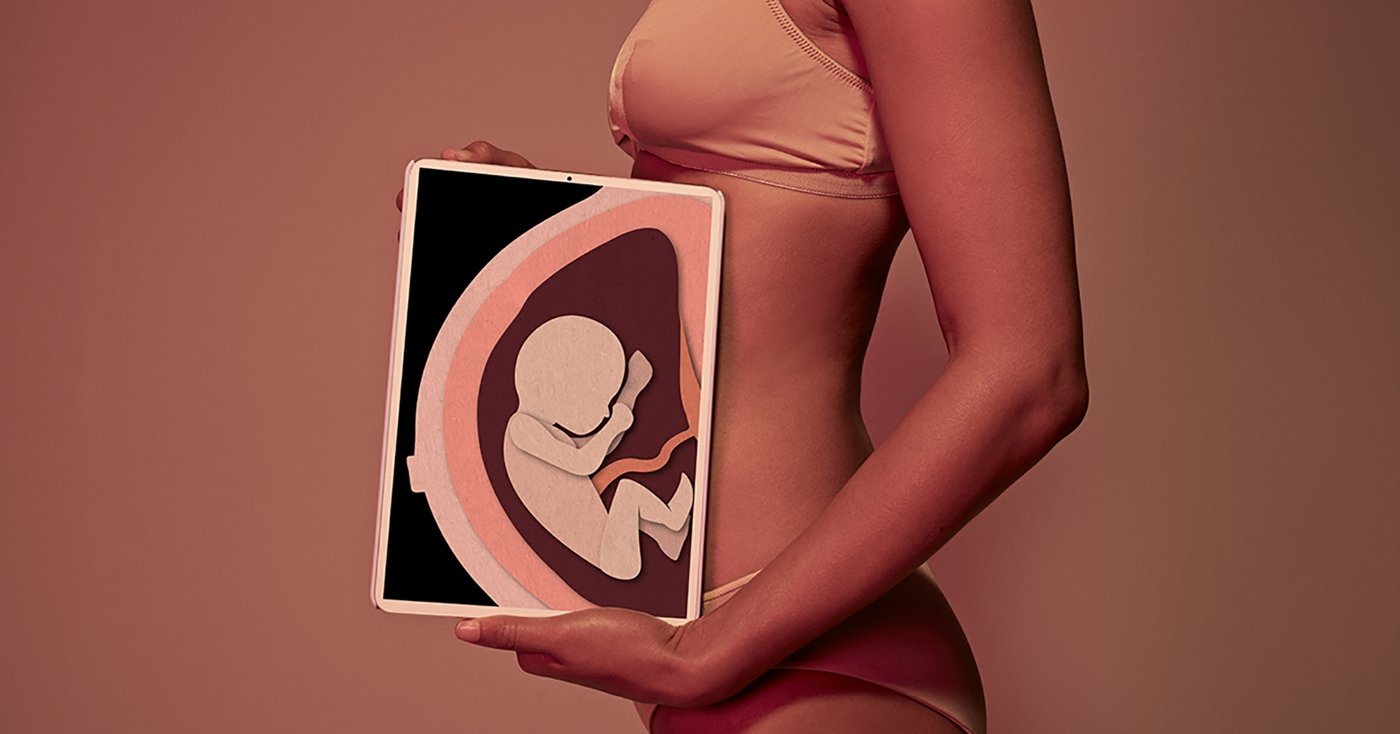
Mit der 17. SSW begins the 5th month. The baby usually starts with a new kind of breathing exercise. It's "breathing" fruit water. Swallowing is often a consequence and a very useful exercise. But only when breathing is preparing for the baby slowly. They also have to learn to suck in order to feed themselves later. This suction reflex trains it there, when it regularly lights up in the thumb. The grip reflex needs to be hung, as it searches for the umbilical cord and plays with you.
For the expecting mother, it is good to know that the baby can now also detect touches from outside. Stroke units are therefore necessarily desired (e.g. with simultaneous massage and skin care against stretch marks). You can also gently swing the baby. It works not only soothing, but also exercises the equilibrium sense. In this way you can also contribute to the development of the fetus.
Pregnancy and growth of baby from the 18th to the 24th SSW
| SSW | Weight (g) | Length (cm) |
|---|---|---|
| 18 | 125 - 190 | 12 - 14 |
| 19 | 200 - 240 | 15 - 24 |
| 20 | 300 | 16 - 25 |
| 21 | 350 - 360 | 26 - 27 |
| 22 | 430 - 475 | 28 |
| 23 | 500 - 580 | 29 - 30 |
| 24 | 600 - 700 | 30 - 31 |
Die 18. SSW is characterized by many movements since the baby, which utilizes the many places it still has to strengthen the muscles. It strikes purple trees, steps and plays with everything it has in its hands and it is the umbilical cord and the foot. It sleeps for about 20 hours a day and then the main thing, if the mother doesn't move any more. The sleeping times are distributed over the entire day. Especially when the pregnant woman is moving, the unborn is weighed in the sleeping bag.
To get used to it 19. SSW the gender is given (as long as it is desired), as it is now time for a preliminary examination. The fetus is equipped with white blood cells, which are produced by the liver and the spleen. Also, the skin becomes ever less transparent as more layers are formed. Covering the Lanugo hair in between the entire body and also the tooth decals. So many new things happen during this week of pregnancy and in the development of the fetus.
The rapid development of the fetus makes movements traceable

It is almost half-time in pregnancy and the development of the fetus. Also in there 20. SSW heard the body training for the daily program. Previously, the baby needed this muscular power to crawl after the birth of the mother's breast. Although the present day remains unchanged, the reflex is still available (similar to the grip reflex, which was the only one that allowed the babies to be held in the mother). Because the rapid growth in the abdomen in the abdomen is slowly becoming more and more scarce, the movements, steps and boxers are not only traceable to the mother, but also to other persons. Also use this for regular streak units. Your baby will love it!
Half time in pregnancy
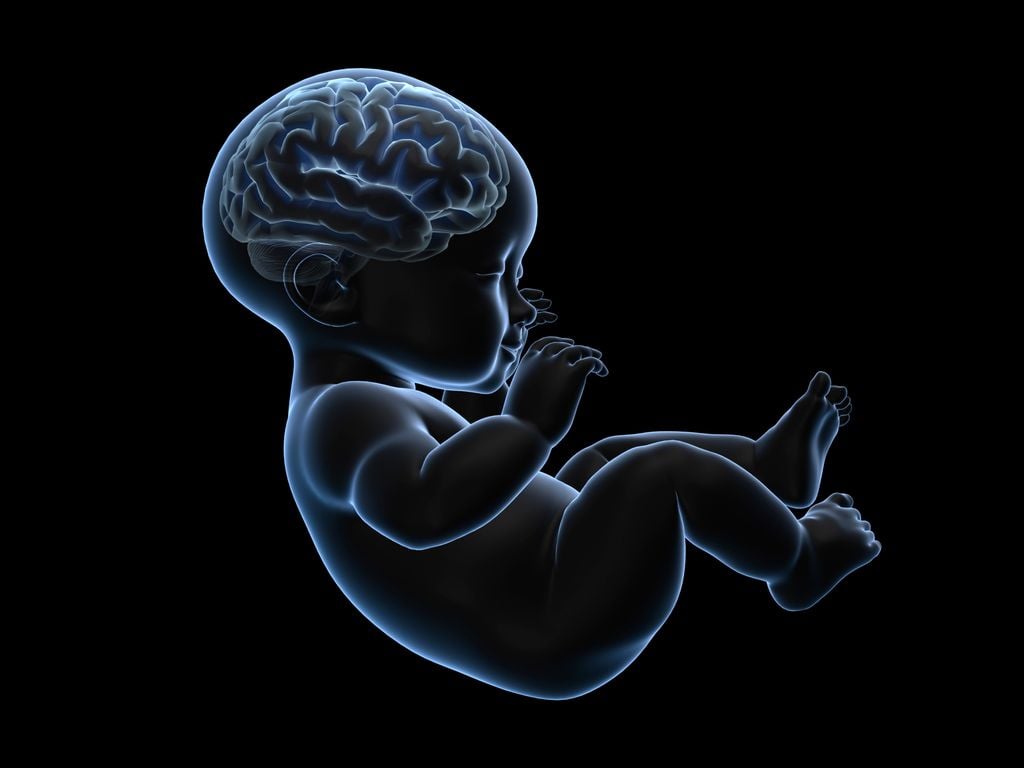
One of the most important organs develops in it 21. SSW weiter. The municipality is the brain, which is now the first brain tumor. Also, the development of the fetus goes further. Eyelashes and eyebrows are already recognizable and the nails are getting harder. So how did the nails harden, so did those bones, to form a relatively stable skeleton soon.
While the baby is off 22. SSW it still grows steadily and in weight, it will grow slowly as soon as possible. Have you ever noticed rhythmic sugars? This is most likely to cause a swallowing, because the baby is still breathing and breathing again, as the fruit water is exhausted. Swallowing remains a normal phenomenon even after birth. He is part of the development of Zwerchfells.

In there 23. SSW the baby is probably ready to be completely covered with the cheesecloth. This has nothing but a protective function for the skin. She should also help at birth, so with your help, the baby will slip better through the birth canal. You may have noticed that these movements are getting stronger. Not only steps are traceable in the 23rd SSW in the abdomen, but also all the baby's turns.
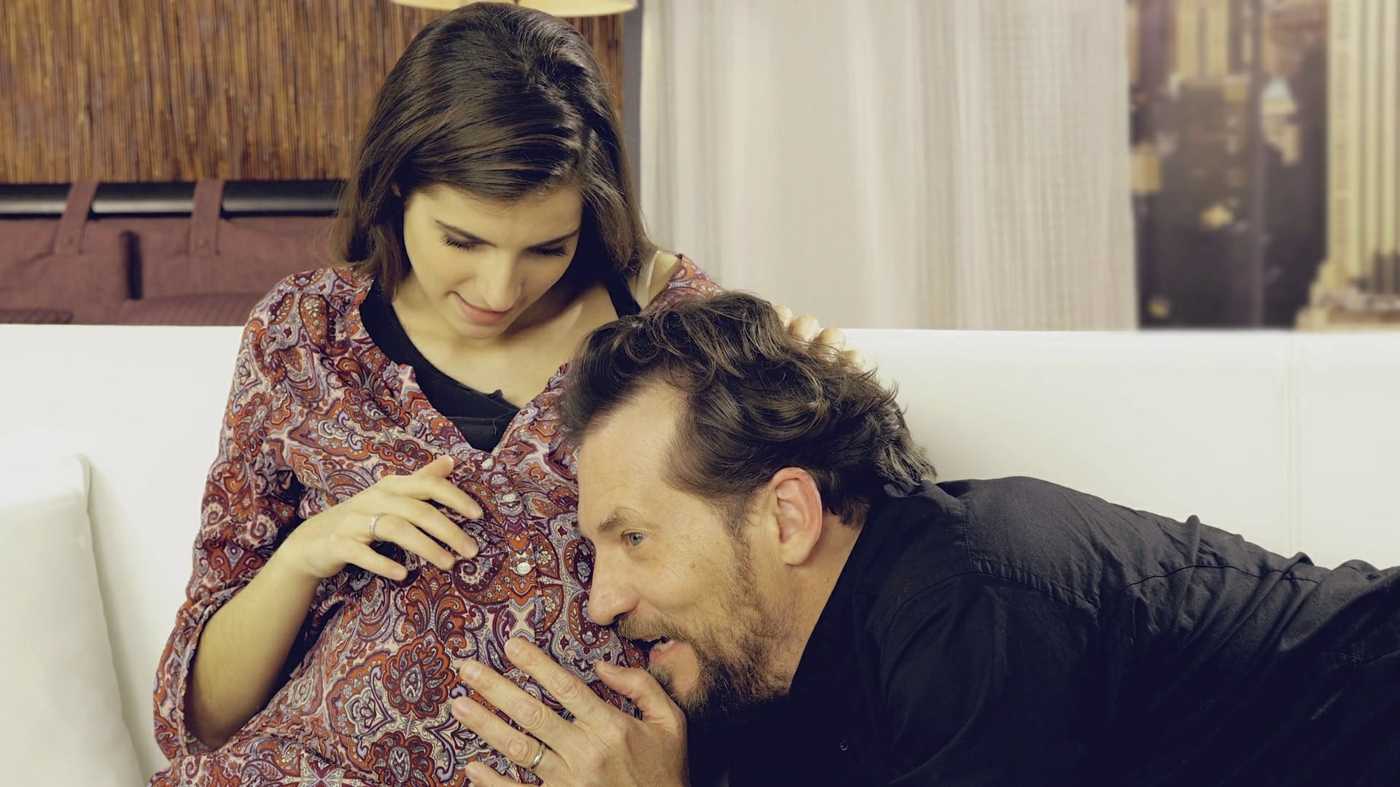
They are in there 24. SSW and then ends slowly but surely also on the 6th month. Surely with each week you are even more impatient to finally be able to hold the little miracle in your arms. But until then, something else has to happen in the development of the fetus. As the hearing develops further, the baby will now be able to pronounce the voice of the mother and recognize it after birth. So, too, Dad and Sister can start talking right now with the baby, so it can recognize this later by the voices.
Development of the fetus - size and length from 25 to 30 SSW
| SSW | Weight (g) | Length (cm) |
|---|---|---|
| 25 | 660 - 800 | 33 - 34.6 |
| 26 | 760 - 900 | 34 - 35.6 |
| 27 | 875 - 1000 | 36 - 36.6 |
| 28 | 1000 - 1100 | 37 - 37.6 |
| 29 | 1150 - 1250 | 38.6 - 39 |
| 30 | 1300 - 1400 | 40 |
In there 25. SSW go ahead with the development of the fetus with great strides. Above all, their senses are constantly improving and the brain is evolving. This week, a breakfast already has very good survival chances, should it come to a breakfast. The organs are indeed finished. Anything that had to be rubbed on the lungs was delayed until a few weeks before the termination.
Die 26. SSW it is marked that the baby finally opens his eyes. This is just about everything that happened in relation to the development of the fetus. Since the tendon nerve is now also connected to the brain, it could, if it were not in the dark, even recognize colors and outlines poorly. Noise is even better now that the nerves in the ears are developing as well. Keep an eye on your diet. Namely, the brain develops more rapidly and needs the right nutrients for this purpose.
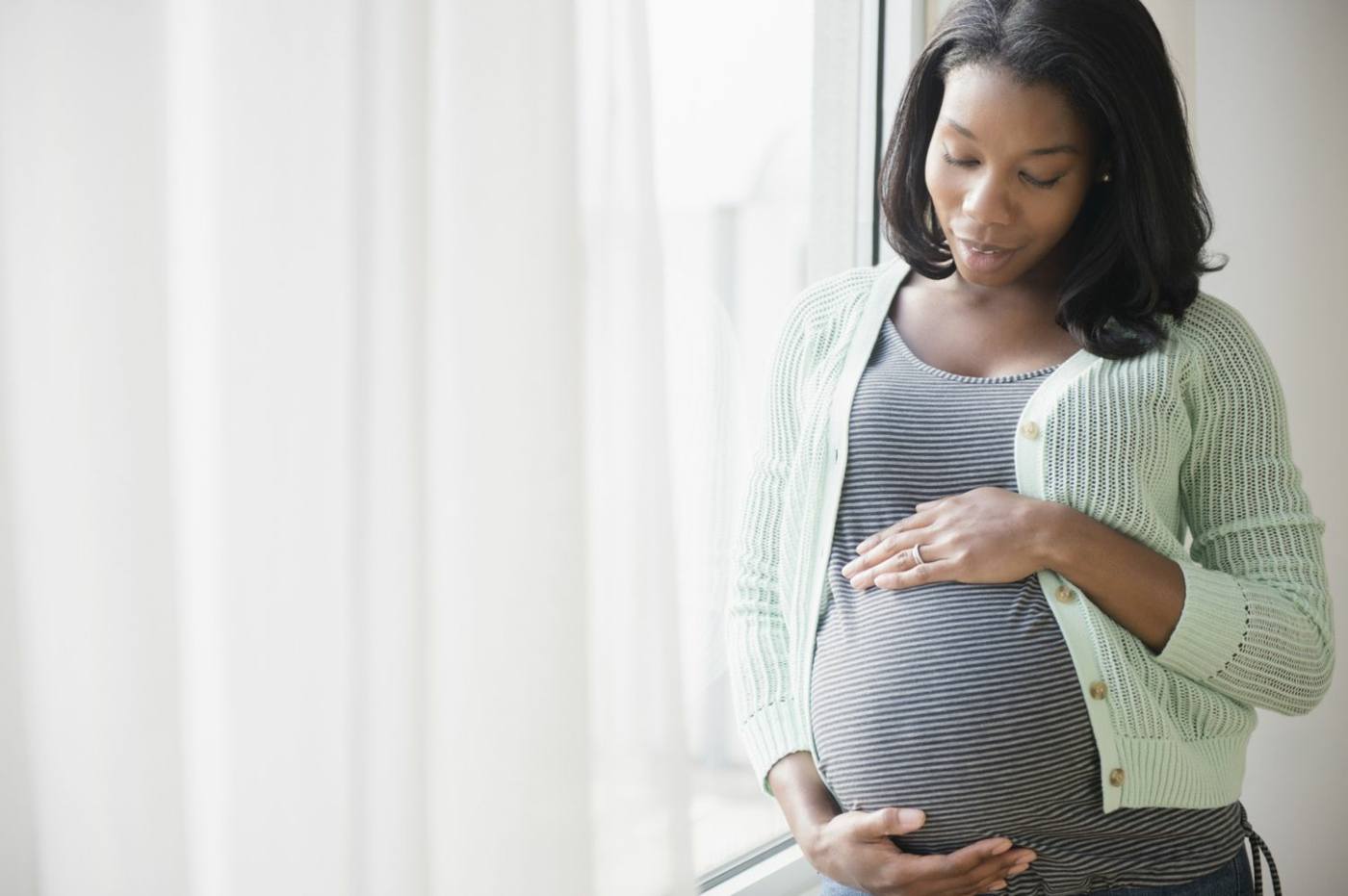
Again is a week ahead and you and your child are in it 27. SSW ange far. A whole kilo can already be the baby in this week. Sometime, one acknowledges a pregnancy at least later in the 27th SSW in the belly of the expectant mother. Then the little one still had enough space to turn and stretch. Then you should not worry that it is still not lying with your head down. This birth position occurs only later. Measurements suggest that the brain is now very active, leading to the presumption that babies are already dreaming a lot.
In there 28. SSW utilize the ability to open and close the eyes regularly. Quite simply, it keeps the eyes open, when it is awake and it closes when it sleeps. Even if it is difficult to recognize and obscure through the belly cover of the mother and also the embrace, it will take another whole while for the longing to develop fully. As a rule, this happens on the second birthday of the child, the full capacity of an adult even between 7 and 9 years).
If you can recognize your newborn later, you should keep your face close and close. About 20 to 30 inches of spacing is ideal. The bone is already fully formed, but still soft. Besides, the baby still stores important fat layers.
At this stage of the development of the fetus, the baby usually takes the birth position
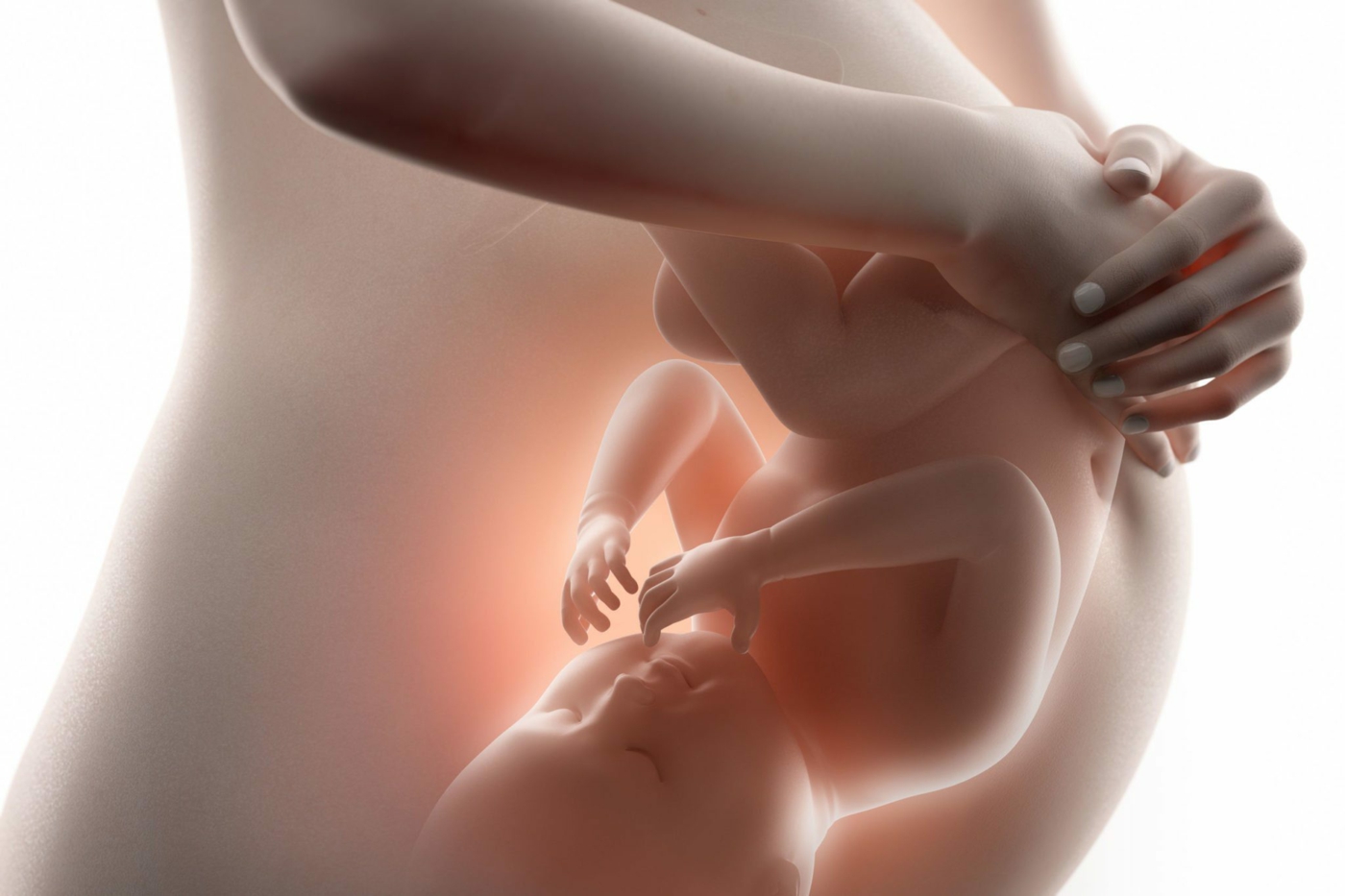
Die 29. SSW is the moment in which most babies take the birth position and turn their heads around. Do not believe that these movements are getting any worse! Because space is still sufficient, because the baby can rotate on its own axis and even the steps are not much desired. Another important step in the development of the fetus is being followed this week: The placenta produces and sends important substances to the baby. In this way, his immune system is strengthened.
The baby's nutritional needs are increasing, too. Pay attention to the right diet! Otherwise, the babies from now on usually have a lot of hair on their heads and the boys' heads walk mostly in the head bag.

Die 30. SSW begins and remains on average for another 10 weeks until birth, in which the development of the fetus continues. The baby is becoming a more sensitive, albeit strict, unit of a good thing. Interestingly, it is also possible to feel pain now. The headache replaces and after the Lanugo hair and the baby can control their own independently of the mother's body temperature.
Babies who are not yet in the birth position, at least, already have the birth position, which calls itself a fetus position. This means that the legs are tightened and the sleeves are shrunk in front of the body. The lungs and digestive tract with the stomach are fully developed.
Weight gain baby per week - 31 to 35. SSW
| SSW | Weight (g) | Length (cm) |
|---|---|---|
| 31 | 1500 - 1600 | 41 - 42 |
| 32 | 1700 - 1800 | 42.4 - 43 |
| 33 | 1920 - 2000 | 43 - 44 |
| 34 | 2150 - 2250 | 45 |
| 35 | 2380 - 2550 | 46 |
Ab there 31. SSW it could happen to you if your baby were less active. Do not worry, that is actually not the case. Since the baby has a little more space, it can not turn, turn and stretch so much. Instead, listen to it in the thumb, play with the umbilical cord or step and box off and on. It comes to mind that the baby works 15 to 20 hours per day.
Although half the pregnancy has been brought for a long time, you can assume that the baby's current weight is even doubling and that the development of the fetus is progressing rapidly. And that's only 10 weeks! The baby urinates in the liquid in fruit water, which is then cleansed again. Here's another art workout for the time after birth. Bisher produced exclusively the liver's red blood cells for the unborn. It is now being taken over from the bone marrow.
Development of the fetus with much extra weight

That's it 32. SSW. Since the baby is mostly lying down with the head already, those steps count in Zwerchfell. The mother can already take the air away. While the length of the baby is only slowly decreasing, the weight continues to rise strongly, the fat layer responsible for the part needs the baby after birth as a storage device, and it will first be dropped.
Also, the lungs tear up, which is one of the last steps in the development of the fetus slowly approaching the end. The thing that was yet to be developed is the surfactant that prevents the lung from collapsing. Fruits were then supported when breathing machines.
A total of 2 pounds can put the baby in the 33. SSW ready to rock! The many fat layers also increase the baby's body temperature. While she meets the mother, she is now one degree higher. This proves that even after birth, the fat layer is said to be a super heat storage and not just a nutrient reserve. For women who are pregnant for the first time, the baby's head could now slip into her pelvis and lower her tummy. From the second pregnancy, this usually happens at least one week before birth.
The fetus now needs calcium

Ab there 34. SSW those bones of the unborn were not even strengthened. Therefore, you should look for a sufficient increase in calcium in the form of milk products. At least now you should start talking to your baby as the hearing is ready to be developed. High tone is one of the reasons for this, which is why the Babies are very responsive. The lungs are almost complete, while the central nervous system still has to mature. For births, however, there is hardly any risk, since the development of the fetus is sufficiently advanced.
About that 35. SSW Here, the unborn baby possesses its own immune system in ways it works by itself and is not supported anymore by the placenta. Nothing destructive is yet to be fully spent. It also claims for some years after the birth was a basic reason why the little children become quite ill right now. The kidneys are fully developed and also the important liver has started with your work and can process toxins. Drink plenty of water again!
Last weeks - Growth table from the 36th to the 40th SSW
| SSW | Weight (g) | Length (cm) |
|---|---|---|
| 36 | 2620 - 2750 | 47 |
| 37 | 2860 - 2950 | 48 |
| 38 | 3080 - 3100 | 49 - 50 |
| 39 | 3290 - 3460 | 50 - 51 |
| 40 | 3400 | 51 - 52 |
The time point from there 36. SSW is also normal for the so-called "setting" of babies, with it slipping into the pelvis. The ideal position is then with a look to the spine of the mother. The so-called "Sternengucker", who go in the direction of the mother's belly, were born more beautiful, because they could then turn heavier in the pelvis. However, knowing Hebrews for the most part was just too smart, and knowing the right grips to help the baby at birth. Babies who did not run and come first with the Po were brought to the world in most cases by caesarean section, although a normal birth can then even be possible.
Right now, your baby is ready and getting started 37. SSW can also be calculated at the beginning of time. It started last month. A baby born this week is not even more of a baby since the development of the fetus is closed off. Cheese grease and hair scum have disappeared completely or partially. These, as well as other Secrets, were swallowed by Baby. After the birth, the whole thing will be separated again. This chair is called Childspeak and possesses a black color, should you not be frightened.
The fetus in the 38th week is ready for birth

In there 38. SSW It can be said that your baby is still not in the right position, if this is your first pregnancy. All organs are fully developed. The lungs, even when finished, just fall out after birth correctly. So it is normal for your newborn to still have no regular breathing rhythm after birth. This soon turns out.
Die 39. SSW starts and you can tell that you and your baby, first and foremost, have a great way to go. Even after half a year, the baby was 600 times lighter than it is now, and you can only see what a remarkable development of the fetus is behind you. This week the baby's toothpick changes. It is Furchen who is already pointing to the worst teeth. Until this one actually appears, one more time will be lost. Each day could now be the big one, since only 5% of all babies were born in the calculated ET.
The development of the fetus is closed and the birth is at the door
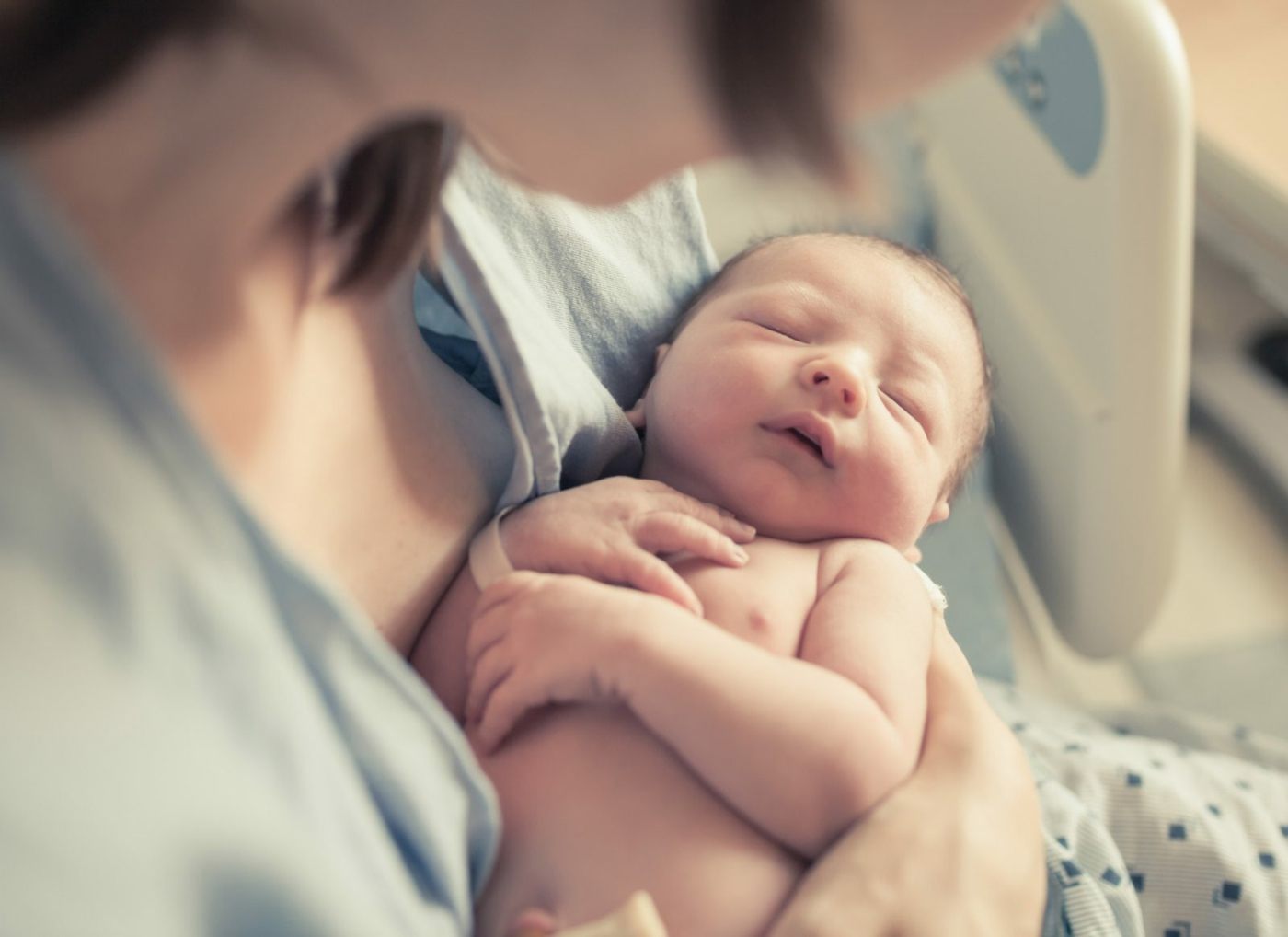
Hat die Geburt noch immer nicht begonnen und die 40. SSW tritt ein, werden Sie sicher umso aufgeregter und ungeduldiger sein. Doch wann es losgeht, entscheidet nunmal das Baby und zwar genau dann, wenn es bereit dazu ist. Und dann wird es von den Wehen nach und nach nach unten und durch den Geburtskanal gepresst.
Dabei hilft aber auch das Baby mit. Die Natur hat es zu diesem Zweck mit Reflexen ausgestattet, mit denen es den Kopf bewegt und die Arme noch weiter an sich anschmiegt, um so schmal wie nur möglich zu werden und einfacher durch den Geburtskanal zu kommen.
Bei nur etwa 15 % aller Schwangeren beginnt die Geburt mit dem Zerplatzen der Fruchtblase. Meist treten zuerst die Wehen ein. Platzt jedoch die Fruchtblase, sollten Sie sich auf den Weg ins Krankenhaus machen.
Erst mit Ende der 41. SSW gilt ein Baby als übertragen und eine Geburt wird eingeleitet.
Kopfumfang Baby – Tabelle der Entwicklung des Fötus
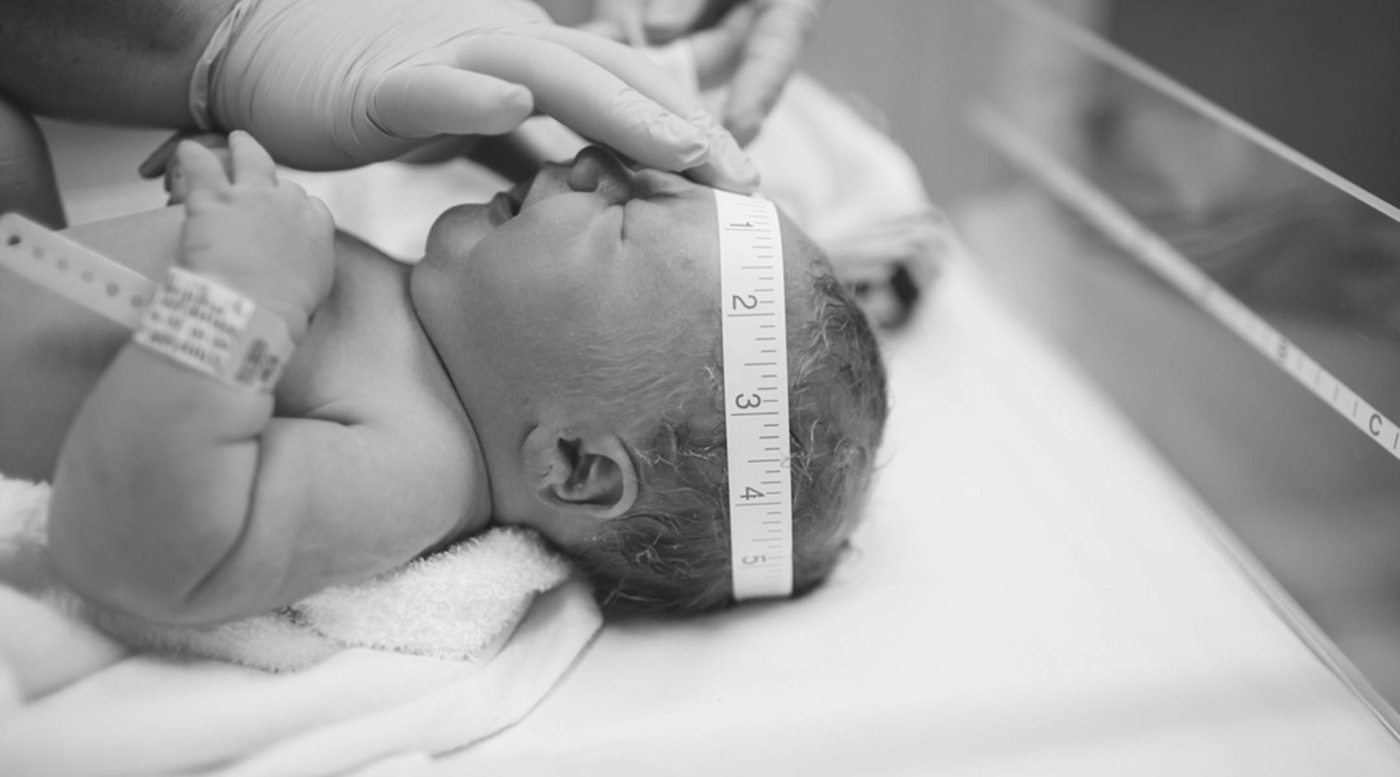
Viele interessieren sich auch für die Entwicklung der Kopfgröße des Babys im Bauch. Der Arzt verfolgt diese Werte während der Entwicklung des Fötus aus demselben Grund wie auch alle anderen (z.B. Bauchumfang oder Länge des Oberschenkelknochens) und zwar um zu kontrollieren, wie sich das Baby entwickelt und ob dies zeitgerecht geschieht. Wieder möchten wir darauf hinweisen, dass alle Zahlen nur Durchschnittswerte sind. Sie finden je nach SSW den Kopfumfang in der Tabelle unten.
Kopfumfang vom Baby in einer Tabelle während der Schwangerschaft
| SSW | Kopfumfang (KU) in mm | SSW | Kopfumfang (KU) in mm | SSW | Kopfumfang (KU) in mm | SSW | Kopfumfang (KU) in mm |
|---|---|---|---|---|---|---|---|
| 20 | 175 | 25 | 234 | 30 | 287 | 35 | 323 |
| 21 | 187 | 26 | 245 | 31 | 296 | 36 | 327 |
| 22 | 198 | 27 | 256 | 32 | 304 | 37 | 330 |
| 23 | 210 | 28 | 267 | 33 | 311 | 38 | 332 |
| 24 | 222 | 29 | 277 | 34 | 317 | 39 | 333 |
Gemessen wird der Kopfumfang vom Arzt mit Hilfe des Ultraschallgeräts. Zu diesem Zweck muss er sich direkt über dem Schädel befinden. Aus dieser Vogelperspektive sozusagen, kann dann kreisförmig der Schädel ausgemessen werden, um die Entwicklung des Fötus in Bezug darauf zu kontrollieren.

Nicht nur der Kopfumfang vor der Geburt wird beobachtet und gemessen, sondern auch in den ersten Monaten nach der Geburt und vor allem während des ersten aufregenden Lebensjahres. Ein durchschnittlicher Kopfumfang bei der Geburt beträgt bei Jungen zwischen 33,1 und 35,8 und bei Mädchen zwischen 32,7 und 35,1. Dies sind die Werte, die von der Weltgesundheitsorganisation veröffentlicht wurden und nach denen sich die Ärzte richten. Sie finden die Durchschnittswerte vom Kopfumfang bei Geburt in der Tabelle unten. Dort sind desweiteren auch die Durchschnittswerte mit den normalen Abweichungen für die kommenden 12 Monate ersichtlich.
Kopfumfang vom Baby – Tabelle und Perzentile
| Alter | Durchschnittswert Jungen (cm) | Normale Abweichungen Jungen (cm) | Durchschnittswert Mädchen (cm) | Normale Abweichungen Mädchen (cm) |
|---|---|---|---|---|
| 0 Tage | 34,5 | 33,1 bis 35,8 | 33,9 | 32,7 bis 35,1 |
| 1 Woche | 35,2 | 33,9 bis 36,4 | 34,6 | 33,3 bis 35,8 |
| 2 Wochen | 35,9 | 34,7 bis 37,1 | 35,2 | 34,0 bis 36,4 |
| 3 Wochen | 36,5 | 35,3 bis 37,7 | 35,8 | 34,6 bis 37,0 |
| 4 Wochen | 37,1 | 35,9 bis 38,3 | 36,4 | 35,2 bis 37,6 |
| 1 Monat | 37,3 | 36,1 bis 38,5 | 36,5 | 35,3 bis 37,8 |
| 5 Wochen | 37,6 | 36,4 bis 38,8 | 36,8 | 35,6 bis 38,1 |
| 6 Wochen | 38,1 | 36,8 bis 39,3 | 37,3 | 36,0 bis 38,5 |
| 7 Wochen | 38,5 | 37,3 bis 39,7 | 37,7 | 36,4 bis 38,9 |
| 8 Wochen | 38,9 | 37,7 bis 40,1 | 38 | 36,8 bis 39,3 |
| 2 Monate | 39,1 | 37,9 bis 40,3 | 38,3 | 37,0 bis 39,5 |
| 9 Wochen | 39,2 | 38,0 bis 40,5 | 38,4 | 37,1 bis 39,6 |
| 10 Wochen | 39,6 | 38,4 bis 40,8 | 38,7 | 37,4 bis 39,9 |
| 11 Wochen | 39,9 | 38,7 bis 41,1 | 39 | 37,7 bis 40,2 |
| 12 Wochen | 40,2 | 39,0 bis 41,4 | 39,3 | 38,0 bis 40,5 |
| 3 Monate | 40,5 | 39,3 bis 41,7 | 39,5 | 38,2 bis 40,8 |
| 4 Monate | 41,6 | 40,4 bis 42,9 | 40,6 | 39,3 bis 41,9 |
| 5 Monate | 42,6 | 41,3 bis 43,8 | 41,5 | 40,1 bis 42,8 |
| 6 Monate | 43,3 | 42,1 bis 44,6 | 42,2 | 40,8 bis 43,5 |
| 7 Monate | 44 | 42,7 bis 45,3 | 42,8 | 41,5 bis 44,2 |
| 8 Monate | 44,5 | 43,2 bis 45,8 | 43,4 | 42,0 bis 44,7 |
| 9 Monate | 45 | 43,7 bis 46,3 | 43,8 | 42,4 bis 45,2 |
| 10 Monate | 45,4 | 44,1 bis 46,7 | 44,2 | 42,8 bis 45,6 |
| 11 Monate | 45,8 | 44,4 bis 47,1 | 44,6 | 43,2 bis 46,0 |
| 12 Monate | 46,1 | 44,7 bis 47,4 | 44,9 | 43,5 bis 46,3 |
Als Perzentil wird eine Art Maßeinheit bezeichnet, mit der Ihr Kind mit anderen verglichen wird. Dieser Vergleich beruht auf die Hauptparameter, die der Kinderarzt in regelmäßigen Abständen untersucht und zwar Gewicht, Größe und nicht selten auch der Kopfumfang. Es werden 5 Perzentilbögen in einem Diagramm abgebildet. Diese lauten wie folgt:
- 3. Perzentile (97 % der Kinder in demselben Alter und mit demselben Geschlecht besitzen einen größere und 3 % einen kleineren Kopfumfang)
- 15. Perzentile (85 % der Kinder in demselben Alter und mit demselben Geschlecht besitzen einen größere und 15 % einen kleineren Kopfumfang)
- 50. Perzentile (50 % der Kinder in demselben Alter und mit demselben Geschlecht besitzen einen größere und 50 % einen kleineren Kopfumfang)
- 85. Perzentile (15 % der Kinder in demselben Alter und mit demselben Geschlecht besitzen einen größere und 85 % einen kleineren Kopfumfang)
- 97. Perzentile (3 % der Kinder in demselben Alter und mit demselben Geschlecht besitzen einen größere und 97 % einen kleineren Kopfumfang)

Perzentile sind also nichts anderes als ein Vergleich mit anderen Kindern desselben Geschlechts und in demselben Alter und wieviel Prozent mit denen Ihres Kindes übereinstimmen oder eben nicht. Eine besorgniserregende Abweichung von den Normalwerten besteht erst dann, wenn die Werte das 85. Perzentil überschreiten beziehungsweise unter dem 15. liegen.
Gewichtstabelle Schwangerschaft
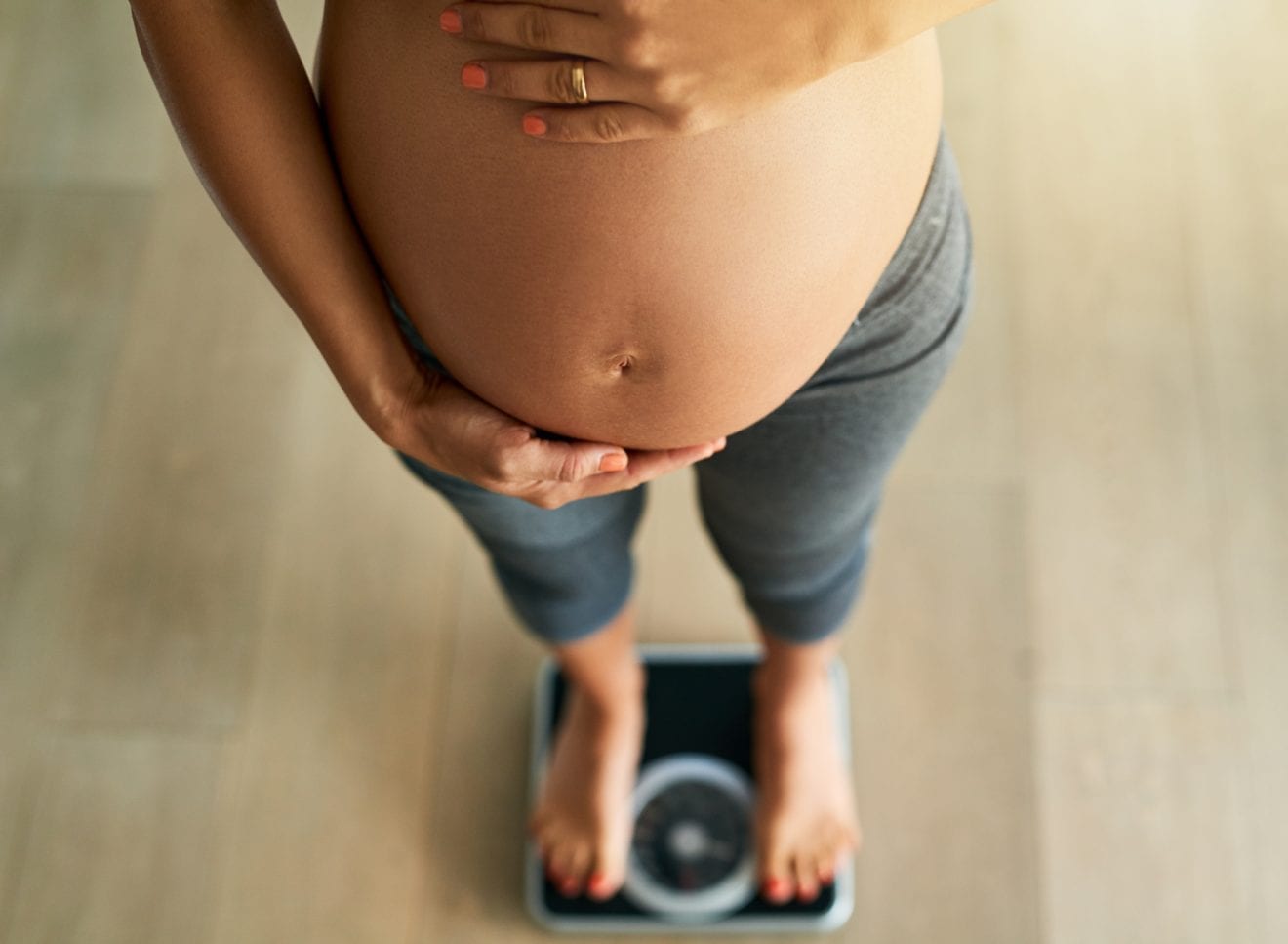
Nicht nur das Baby nimmt während der Schwangerschaft und Entwicklung des Fötus immer mehr an Gewicht zu. Auch die Mutter hat mit einer Gewichtszunahme in der Schwangerschaft zu kämpfen. Diese kann bei jeder Frau natürlich unterschiedlich groß ausfallen, was unter anderem mit der normalen Statur der Frau in Zusammenhang steht, aber auch mit der Größe des Babys und der normalen Entwicklung des Fötus. Eine Zunahme des Gewichts muss auch nicht immer gleich mehr Speck auf den Hüften bedeuten.

Wenn Sie also mal wieder auf der Waage erschrecken, bedenken Sie, dass ein Großteil der zusätzlichen Kilos nichts mit Ihrem Fett zu tun hat, sondern dabei auch das Gewicht des Babys, der Plazenta, des Fruchtwassers und anderen Dingen eine Rolle spielt. In den folgenden Tabellen sehen Sie einmal, wieviel Kilos zusätzlich je nach Ausgangsgewicht üblich sind, sowie die durchschnittliche Gewichtszunahme je Monat. Anschließend erhalten Sie eine Liste mit all jenen Dingen, die dafür die Ursache sind.
Durchschnittliche Gewichtszunahme je nach Ausgangs-BMI
| Ausgangsgewicht | BMI | Durchschnittliche Gewichtszunahme (kg) |
|---|---|---|
| Untergewicht | <18,5 | 12,7 bis 18,2 |
| Normalgewicht | 18,5 bis 24,9 | 11,4 bis 15,9 |
| Übergewicht | 25 bis 29,9 | 6,8 bis 11,4 |
| Starkes Übergewicht | >30 | < 6,8 |
| Schwangerschaft mit Zwillingen | - | 15,9 bis 20,4 |
Alle Angaben sind wieder Durchschnittswerte und können von Frau zu Frau und Baby zu Baby variieren!
Faktoren, die die Gewichtszunahme während der Entwicklung des Fötus beeinflussen, in Zahlen:
- Baby etwa 3,5 kg
- Gebärmutter etwa 1 kg
- Plazenta ca. 0,75 kg
- pro Brust etwa 0,30 kg
- Blutvolumen ungefähr 1,15 kg
- Gewebsflüssigkeit rund 2 kg
- Fett ca. 1,70 kg

Im Durchschnitt nimmt eine Frau mit Normalgewicht also etwa 12 kg während der Schwangerschaft zu, manche mehr, manche weniger. Das hängt von verschiedenen Faktoren ab, darunter auch Ihr Ausgangsgewicht. Sollte sich Ihr Gewicht unterscheiden, müssen Sie sich keine Sorgen machen, da der Arzt auch dies während der gesamten Schwangerschaft kontrolliert und beobachtet und Sie darauf hinweisen würde, wenn Sie mehr auf Ihr Gewicht achten sollten. Ein Großteil des Gewichts verlieren Sie meist schon einige Wochen nach der Geburt.
Auf die Monate verteilt, nimmt eine schwangere Frau im Durchschnitt wie folgt zu:
| Zeitraum | Gewichtszunahme |
|---|---|
| 1. bis 4. Monat (bis 16. SSW) | 2 kg |
| 4. bis 5. Monat (17. bis 22. SSW) | 2 kg |
| 6. Monat (23. bis 26. SSW) | 2 kg |
| 7. bis 8. Monat (27. bis 35. SSW) | 500 g pro Woche |
| 9. Monat (35. bis 40. SSW) | 350 g pro woche |
Entwicklung Zwillinge im Mutterleib

Durchschnittswerte hin oder her, sind gleich zwei kleine Wunder im Spiel, sind Abweichungen von ihnen erst Recht keine ungewöhnliche Sache. Zum einen ist die Gewichtszunahme bei einer Schwangerschaft mit Zwillinge Schwangerschaft mit Zwillinge meist größer, als bei einem einzigen Baby. Zum anderen sind für Zwillinge Größe und Gewicht unterschiedlich. Nicht selten haben Zwillinge ein Gewicht, das eher für Frühchen typisch ist. Verläuft eine Schwangerschaft jedoch normal, beginnt die Geburt meist bereits in der 37. Schwangerschaftswoche, sodass beide Babys ausreichend Zeit haben, sich zu entwickeln.
Gewichtszunahme nach SSW – Zwillinge und Entwicklung
| SSW | Gewicht (g) je Baby | Größe (cm) je Baby | SSW | Gewicht (g) je Baby | Größe (cm) je Baby | SSW | Gewicht (g) je Baby | Größe (cm) je Baby |
|---|---|---|---|---|---|---|---|---|
| 10 | 2 | 3 | 20 | 240 | 15,3 | 30 | - | 37 |
| 11 | 2 | 4,3 | 21 | 280 | 26 | 31 | - | 38 |
| 12 | 8 | 6,1 | 22 | 350 | 28 | 32 | - | 40 |
| 13 | 18 | 7,3 | 23 | 440 | 30 | 33 | - | 42 |
| 14 | 25 | 8,5 | 24 | 540 | 31 | 34 | - | 43 |
| 15 | 50 | 9 | 25 | 680 | 32 | 35 | - | 44 |
| 16 | 80 | 10,8 | 26 | 800 | 33 | 36 | - | 46 |
| 17 | 100 | 11,1 | 27 | 910 | 34 | 37 | - | 47 |
| 18 | 150 | 12,5 | 28 | 1000 | 35 | 38 | - | - |
| 19 | 200 | 14 | 29 | - | 36 | 39 | - | - |
Während der ersten Monate unterscheidet sich die Entwicklung kaum bis gar nicht von denen der Einlinge. So dreht sich das Gewicht in der 16. SSW immer um 100 g, in der 28. SSS wiederum um 1000 g. Danach ändert sich dies aber. Meistens sind sogar die Gewichts- und Größenunterschiede zwischen den beiden Zwillingen recht groß, sodass ab der 29. SSW keine Durchschnittswerte mehr angegeben werden. Diese würden schlichtweg nicht stimmen. Da eine Zwillingsschwangerschaft für gewöhnlich bis spätestens zur 37. SSW andauert, haben wir in der Tabelle auch nur die Entwicklung des Fötus bis zu diesem Zeitpunkt angegeben.
The post Wie die Entwicklung des Fötus & Embryos aussieht, erfahren Sie hier! Fakten im Überblick & Tabellen appeared first on Deavita.com | Home ideas, design, hairstyles, makeup, lifestyle, health and beauty tips.





















